Home »
Misc »
How to get open on offense in basketball
How to get open on offense in basketball
2 UNSTOPPABLE Ways To Get Open For More Shots
If your players can create space from the defense and get open, it gives your team many more scoring opportunities.
Your players either get an open shot immediately off the catch.
If the initial shot is defended, your players have an advantage off the dribble because the defense will be in recovery mode.
If your players can't get open, your team's ability to shoot doesn't matter... neither does your offensive execution if you can't pass the ball. So this is a vital component to your team's success.
In this video, Don Kelbick demonstrates how to get open and two different cuts that you can utilize.
As Don Kelbick says in the video...
"Defense is about dictation. Offense is about control.
Once you can control him, you can attack him.
Where do you go if you want to control the defense?"
Step 1 - Go to the basket.
The defender has to get closer to you. If they don't, you get a lay up.![]()
Step 2 - Step through.
You step towards the basket with your top foot, then you step through with your bottom foot.
Step 3 - Inside hip, inside shoulder.
You get your inside hip and your inside shoulder inside of the defense to get them on your backside.
Step 4 - Execute cut
As shown in the video, you can execute a V-cut or an L-cut.
V-Cut
With this cut, your path looks like the letter V.
1. As shown in the video, you repeat the steps of taking your defender to the basket and getting them on your back (step through - inside hip, inside shoulder).
2. Once you gain position, you drive off your inside leg and step with your outside leg to cut to the wing.
3. You extend your outside hand extended for a passing target.
4. You pivot and look to score.
L-Cut
The path of the L-cut takes the form of the letter L.
1. With the L-cut, you repeat the steps of taking your defender to the basket and getting them on your back (step through - inside hip, inside shoulder).
With the L-cut, you repeat the steps of taking your defender to the basket and getting them on your back (step through - inside hip, inside shoulder).
2. You cut up the lane line.
3. Then you stop and hold. You can vary the stop anywhere on the lane line from the low post to the high post.
This makes it very difficult for the defender to time your cut. You control when the cut is going to happen and the defender has to react to you. Thus, you have the advantage.
4. Next, you cut out and slightly up to the wing area.
You cut slightly up because it creates a better passing angle and makes it more difficult for the defender to deflect the pass.
5. As you cut, you provide a passing target with your outside hand and outside foot for a target.
6. You execute an inside pivot (reverse or back pivot) and look to score.
If the defender overplays either cut, you can always cut backdoor and clear out.
Here are three drill progressions that you can use to improve getting open and scoring from this position.
Drill #1 - No Defense
You can use the drill in the video to improve the footwork and shooting from this situation.
1. Player cuts to the first chair. Player executes step through and imagines getting the defender on the inside hip and inside shoulder.
2. Next, the player cuts to the second chair, turns, and shoots. You can designate which cut to practice.
Drill Variations For Shooting:
- Shooting off the catch
- 1 dribble jump shots
- 2 dribble jump shots
- Lay ups
- Different finishing moves, etc.
When To Use Chairs Or Passers In The Drill:
You can use chairs or a passer if they are capable of making good passes.
Personally, I prefer to use chairs when first teaching the skill. As Don says, I don't like bad passers to screw up the skill development practice, especially at the initial learning phase.
When players get accustomed to the footwork, I introduce passing.
You can also do a hybrid. You can do some repetitions with the chair, then some repetitions with a passer. With younger players, this could be very useful.
However, if you're in a small group of 2 or 3 players, you could pass from the beginning.
Drill #2 - 1v1 Wing
Next, you can incorporate some decision-making.
1. This drill starts with the offensive player & defender on the wing. From there, the offensive player tries to get open. Play is live immediately.
2. When the offense catches the ball, the offense tries to score. The defense tries to stop the offense.
You can also teach your teams to only pass the ball when the offense lifts a hand as a passing target. That way, turnovers from miscommunication are reduced.
Drill Variations:
- Shot clocks / Dribble limits
To enforce specific habits, you can also use shot clocks (3 to 5 seconds) or dribble limitations (2 to 3 dribbles).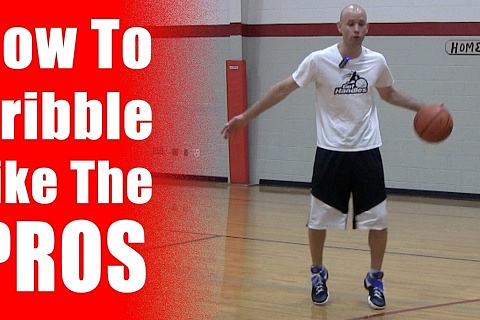
You can use shot clocks, so players don't develop habits of doing extra, unnecessary jab steps. From a 1v1 perspective, we emphasize shoot or attack. From a team perspective, we emphasize immediately score or pass.
Dribble limits teach your players to be efficient with the dribble. Players have a horrible habit of catching and immediately dribbling. This eliminates that habit.
Additionally, they can use extra unnecessary dribbles on drives to the basket which slows them down. It can also force them to move in straight lines since there are fewer dribbles. So it makes them quicker to the basket in two different ways.
- Backdoor cut when overplayed
You can also make adjustments based on your offense. For example, I don't want my players going past the 3-point line. If the defender overplays, the offense cuts backdoor. If they don't cut backdoor, it's an automatic turnover.
- Time limits to get open
If you want to add a higher level of difficulty to get open, you can put a time limit on getting open.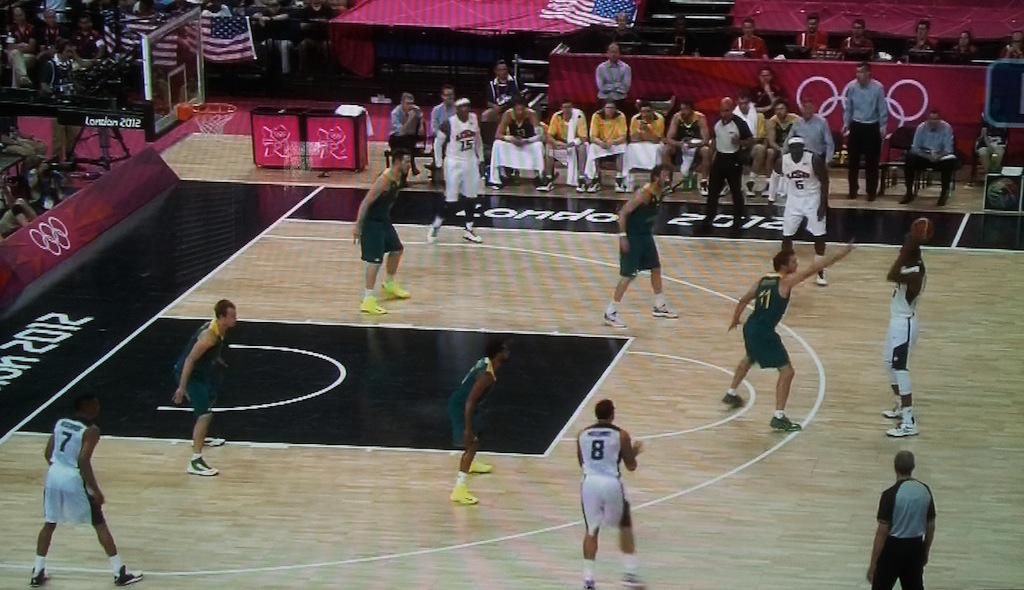 You can also give the defense points for not allowing passes.
You can also give the defense points for not allowing passes.
You have to be careful with this and with your communication to your defense because this will make the defense more prone to be out of position if the offense catches the ball.
- One wing cut and one backdoor cut to get open.
You could also use a rule where the offense has one cut to the wing and one cut backdoor to get open. If the offense doesn't get open, the turn is over.
Drill #3 - 2v2 Wing
1. A passer is on top with a defender guarding them. The passer cannot dribble to start the drill. 2. The second offensive player is on the wing. The drill starts with the offensive player taking the defensive player down to the basket replicating the situation above. Play is live.
The offense can only use one side of the court. You split time between the left side and right side of the court.
Like above, you can do shot clocks, dribble limitations, offensive rules, and time limits to get open.
For this situation, you can also do passing limits. That way, players learn how to immediately attack a situation.
You can also do something similar with 3v3, 4v4, and 5v5 where the player with the ball has to pass to initiate the offense.
Resources:
This video clip is from Don Kelbick's Attack & Counter Skill Development System. This is a great resource for individual skill development.
For team-oriented offense development, you can look at Don Kelbick's Motion Offense Videos.
What do you think? Let us know by leaving your comments, suggestions, and questions...
Getting Open, The Most Under-Valued Part of the Game
Get More Tips from Joe Abunassar
If you liked this tip, then simply add your email address below to get more powerful performance tips emailed to you.
Email Address
Share This Tip [DISPLAY_ULTIMATE_PLUS]
Impact Founder, Joe Abunassar Says:
I think one of the most under-valued part of the game is a players ability to get open on the offensive end. Before a player gets a chance to utilize the offensive weapons that he’s developed, he must simply, “get open.”
This becomes more and more of a challenge as defenders become bigger and more athletic at higher levels. The elite college players that arrive at Impact to prepare for the NBA Draft have become accustomed to easily separating from their defender with their size or athleticism advantage and without really thinking through the process of getting open to receive the ball. When preparing for the NBA, the league with the world’s best defenders who possess superior length and athleticism, players must be trained how to get open to catch a pass and facilitate the team’s offense.
Our players like Kyle Lowry, Demarcus Cousins, Emmanuel Mudiay and Rudy Gay work very hard on how they will get open and especially WHERE they will catch the ball. Strength and conditioning training plays a major role in getting open, but to be really effective at the highest levels, these players must utilize footwork and body positioning techniques that we review in this section.
In this video, we show the proper angles, body positioning, and footwork that players of all positions must possess in order to effectively get open. This skill can really help your team run offense more efficiently and effectively no matter what offense you are running.
What's Impact's Online Training All About?
Since 1997, Joe Abunassar, Founder of Impact Basketball and world renowned Player Development guru, has been making players and coaches just like YOU better. He knows what it takes to get more from you and every member of your team and has packaged his career knowledge into an Online Training Curriculum and Community just for you.
- You'll get the Solid Fundamentals that must become second nature to excel.
- You'll learn game-ready conditioning from proven Performance Exercises and drills.
- You'll obtain nutrition, rest and mental preparation advice that leverage your results.
This program includes the strategies and techniques Joe uses with the stars and coaches of the NBA, NCAA and International basketball leagues that hire him on a regular basis. Fact is, Joe is on top of their speed dial list. But, he didn't build this program for them.
He made it for YOU - a professional, college, high school, club or recreational basketball coach or player looking to get the most out of your training - both on the court and in the weight room. This year-round curriculum packages up the accumulated knowledge, experience and wisdom Joe and his Impact Basketball staff have accumulated working with the elite basketball greats and delivers it right to your desktop, tablet and phone for your immediate improvement.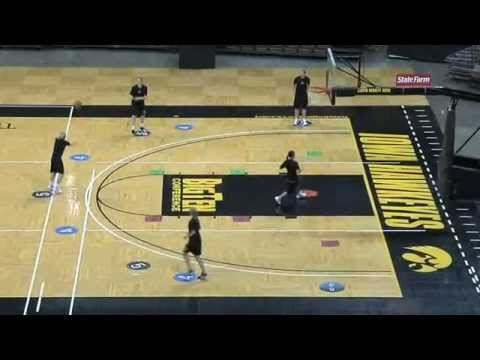
You don't need the best weight room or the high-tech gadgets to get the results. You have everything you need right now to be great - you just need to put in the TIME, do it the RIGHT WAY and enjoy the GRIND!
Tyronn Lue
Head Coach Cleveland Cavaliers
Joe's system is something that every coach, trainer, or even parent, can use to raise the level of every player they coach or train. This program is proven and player development is highly overlooked in basketball today.
Who's Joe?
An avid tri-athlete and 14-time Ironman, Joe began his illustrious career coaching alongside legendary Hall of Fame coach Bob Knight at Indiana and Wyoming Universities, which included 2 Big-Ten Championships and a Final Four appearance. Joe went on to develop his basketball skill and performance training business in Bloomington, Indiana.
His early group of clients included Kevin Garnett, Chauncey Billups, Tyronn Lue, Al Harrington, Tayshaun Prince, and Dahntay Jones who would all go on to have very successful and lengthy NBA careers while continuing to train with Joe. He then started IMG Basketball Academy in Sarasota, Florida which is now a nationally recognized high school and youth team basketball program.
He then started IMG Basketball Academy in Sarasota, Florida which is now a nationally recognized high school and youth team basketball program.
In 2006, Joe founded Impact Basketball in Las Vegas, Nevada and Los Angeles, California now training over 200 NBA professionals, men’s and women’s national teams, McDonalds and NCAA All-Americans, foreign professionals, as well as numerous talented youth players from all over the world participating in Impact Youth Summer Training Camps and Impact Academy.
Openings and tricks
Source: http://ju-piter.com/textbook-ultimate-frisbee/offence/faking-2/
Original: Mastering the Art of Cutting in Ultimate
Preparation of the article: Tyulkin Pavel
translation by Alena Smirnova
Opening is the mastery of the cutter to break away from the defender at the right moment and in the right place to get the disc.
There are a few basic things to remember about the cutter:
- Firstly, the cutter must “know the thrower”, namely: to know what kind of throws the thrower likes and what he is able to throw, in other words, it makes no sense to open into a closed sector if the thrower is not able to throw a force, throw an insider out or hummer.

- Second, the cutter needs to know what throw to expect from the thrower (this can be determined by the team's attack tactics).
- Thirdly, the cutter must “see” the opening field so as not to block the space into which his teammates are going to open: he must leave in time if he opened, but did not receive the disk, and must try to avoid openings at the same time as his own teammate, especially if teammate opening is more reliable.
(good advice from Sockeye - turn around, before you make a move to the sector from the stack, perhaps from behind, into the space you have chosen, the player is already running, he has a chance to get the disc deeper in the field, but you will block the sector with your cut)
In most cases, the physical characteristics of the cutter and the defender are the same, so the offensive player must play smart to open up. In general, the attacking player tries to deceive the defender by showing that he wants to run in one direction, while he himself runs in the other. Such deceptions can be of the following nature:
Such deceptions can be of the following nature:
- Physical - such as a sudden change of direction or acceleration
- Psychological - for example, feign passivity/disinterest in a run-out, allowing the defender to relax, and then use his mistake to his advantage.
- Temporary - i.e. you can wait until the defender turns away, for example, check where the disk is, and at that very moment open.
The openings themselves can be divided into two main types: from a static position (after a pool or stoppage of the game, for example) and, let's call it that, opening-continuation cuts, for which you need to correctly select the right one the moment when the catter is ready to receive the disc, namely when the previous pass was caught by a teammate ready to continue the attack.
Openings from a static position are, in fact, the first opening or initiation of an opening in this point. The opening initiation for the first acceptance of the disc occurs while the next opening player is looking for how to further and more advance the disc.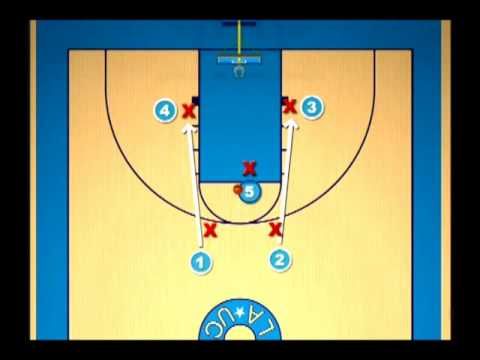
Deception, cunning and the right timing are the main components of a good opening that go hand in hand with the cutter's ability to properly plan and correctly execute the opening at the right time. These components of a good opening allow the cutter to beat a defender who is more physically strong and in a better position on the field.
The cutter's position on the field must provide him with at least two effective opening options, otherwise the defender will have the advantage by positioning himself intelligently in the direction of the cutter's opening. If you take a position on the field that allows you to open in both directions, this will allow you to make a trick in one direction, and then run in the other. The defender will take such a position to block the movement of the boat in one specific direction - an open sector.
An effective general opening principle is to use what the defender provides, in other words, to open in the direction the defender is least absorbed in defending.
Of course, to the same extent, the cutter should be able to qualitatively surpass the defender, opening in the direction that the defender closes, however, this fight between the cutter and the defender will be more intense. Thus, there is some kind of compromise here: the thrower can make a more difficult throw into the closed sector (where it is easier to open) or an easier pass, but into a tightly defended open sector.
Below are a few tips to help the cutter pick the right time to open and throw off his protector easily:
- Players should reveal when their marker is in an unstable/unfavorable position with respect to them;
- Players should open when their markers are not looking at them but looking back, possibly checking the disc;
- Players should open when their marker is incorrectly positioned or cross-legged;
- Players should open after they have deceived a marker from where the players intend to open;
Having taken a position opposite the defender, the cutter must first of all throw him off. The attacker should mislead the defender about his runout path or displace the defender from where the runout is supposed to be.
The attacker should mislead the defender about his runout path or displace the defender from where the runout is supposed to be.
If the cutter is first in the stack, then the defender is more likely to position himself between him and the thrower, perhaps covering the open sector a bit. While the cutter is moving forward, the defender is forced to step back, maintaining his position between the cutter and the disc. Moving the cutter directly towards the thrower balances the chances of it opening both forehand and backhand, which leaves the marker in a state of uncertainty, making one guess which way the cutter will run. The initial direction of movement does not have to be directly on the thrower, but from the position of the first in the stack, such a direction opens up the most options for the attacking player to maneuver. However, if the first player to open to the disc takes the position of the last player in the stack, the marker will presumably be behind the cutter, protecting the zone, and in order to discard the defender, the cutter must first move away from the disc, then fake and rush back, directly to the disc .
Any opening, usually associated with a clear and quick change of direction and with a sharp acceleration, is preceded by a snag. Below are some examples of trickery techniques:
- Head and shoulder fake (head and shoulder fake) - this trick can be very effective if the defender of the player who received the disk is very close to him. By decoying with the head and shoulders to the same side, the cutter gains the advantage of breaking away from his defender, which allows the cutter to make a free opening.
- Out/In or In/Out (Back/Forward - Forward/Back) is one of the most commonly used types of openings in Ultimate. The idea is that the cutter runs with all its might 3-5 meters in one direction, and then abruptly stops and quickly opens in the opposite direction. Done properly, this kind of opening helps to elude the defender and make a free opening.
- Jab step
(Basketball example, same jab step technique)
- this method helps to open easily and quickly. The bottom line is that the cutter takes a step in one direction, and as soon as the foot touches the ground, it is repelled from it and runs in the opposite direction. The Jab step is meant to be fast, and then it will not once help the cutter open, as it will force the defender to turn his hips in the direction where the decoy was made to prevent a run in that direction, at which point the attacking player will quickly move in the opposite direction and freely from the defender will open for a pass.
The bottom line is that the cutter takes a step in one direction, and as soon as the foot touches the ground, it is repelled from it and runs in the opposite direction. The Jab step is meant to be fast, and then it will not once help the cutter open, as it will force the defender to turn his hips in the direction where the decoy was made to prevent a run in that direction, at which point the attacking player will quickly move in the opposite direction and freely from the defender will open for a pass.
- Jump-step - Dropping your guard, taking a small jump-step or decoy one way and opening the other can all make the above things easier.
(video shows Ben Wiggins doing a jump-step and getting a pass in the zone)
A jump-step is nothing more than a small jump that is done with both feet on the ground and knees bent. This movement saves power in the legs and allows for a sharp acceleration in any direction, which is key: the defender will spin on his heels, not knowing which direction his player will take, which will give the cutter an advantage.
When the cutter has been able to get ahead of the marker and is running into an open arc, the thrower must be able to throw the disc so that only the cutter can catch it. If the defender is significantly faster than the cutter, a pass to the space in front of the cutter means that he and his defender are the only ones who will fight for this disc, provided that the rest of the attackers are covered by their defenders and cannot intercept this disc. In this case, the important point is that, having caught the disc, the cutter will have the opportunity to immediately give a pass that his defender will not have time to close. The farther and more the opening is to the side, the more difficult it becomes for the defender to get into a position that will allow him to stop the rapid advance of the disc further. We also believe that the farther and more the player opens to the side, the greater the opportunity to move the disk deeper into the field, namely, to throw a long pass deep into the field.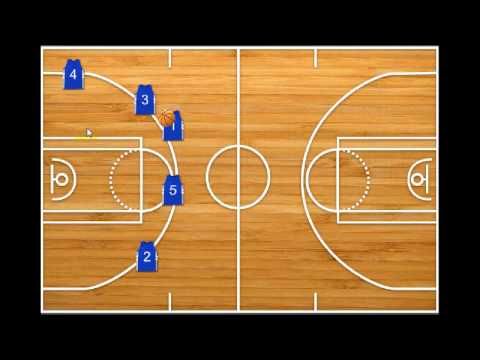
At the end of the opening, the role of the cutter changes: he must pass. There is a set of specific techniques that will allow him to maximize his contribution to the game of the whole team. Those techniques are:
- Know where the next player plans to open
- Have a good grip on the disc so that it can be thrown off quickly
- Lunge to make it easier to throw
- Body position must be balanced.
- Feel confident to pass further immediately
The player's ability to complete this task, and the efficiency with which they can complete it, will determine the exact point in time when the next cutter should begin to open. The more experience a player has in catching and passing, the earlier the next opening will start in time, and vice versa, the more time it takes for a player to receive and give the disc, the longer the next opening will be delayed. For a short opening, perhaps the best time is when the disk is already being caught or a little later.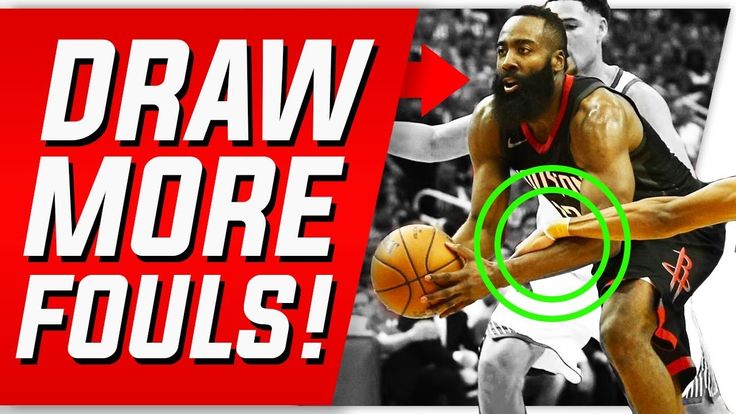 Too early and the cutter has already left the space it opened into and thus it will be impossible for it to get the disk.
Too early and the cutter has already left the space it opened into and thus it will be impossible for it to get the disk.
Organization of attack system against personal defense
Positional attack system is carefully studied by drawings explaining all interactions. It needs to be discussed as fully as possible. The best method for teaching positional attack is to use a slate to draw interactions. Then five players must slowly make the necessary interactions on the court without resistance. The coach can, of course, show the players the necessary movements himself. Once all aspects of the attack have been fully worked out, the players can execute the combination under the guidance of the assistant coach or team captain while the coach works with the second group of players. The coach must insist on the correct execution of the movements from the very beginning, since the success of the combination depends on precise movements and calculation. It is necessary to hold the player if he starts moving ahead of time, or slightly push him at the right time.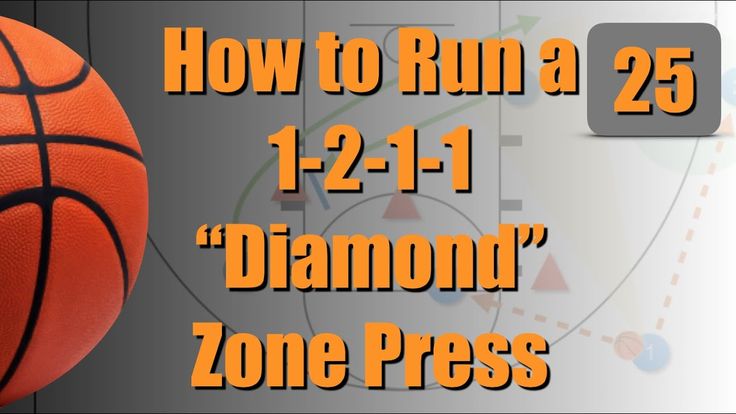
On the first day a team starts learning a new combination, the coach gives it a number, a name, or identifies a distinctive signal. He must constantly repeat the name, number or distinguishing signal at the initial stage of learning the combination. On the second day, the coach repeats the same procedure, carefully discussing the meaning of the interactions with the team at the board, having the players perform them at a slow pace without resistance. On the third day, the coach turns on passive defense when performing a combination. Defenders should usually be weaker than offensive players and should be warned to passively follow their charges. Thanks to this, the attackers act confidently. Aggressive defense in the initial period of studying the combination can deprive attackers of confidence. On the fourth day, the players move more aggressively. Since they have already fully mastered the meaning of interactions, the coach must break down the agreed actions into structural components for training (of course, over the course of four days, the coach also periodically engages in other game exercises).
Positional attack against personal defense is characterized by an appropriate arrangement of players. First of all, you should try to create conditions for playing one against one with the weakest defender. Then, if the opponent pulls back to secure the weak defender, the attackers must use the abandoned zone, after creating the impression that the attack will still be deployed towards the weak defender. In addition, an internal screen is used, which can be set for a player with or without the ball. At the same time, it is important to provide measures to combat switching and the use of turns in order to negate the effectiveness of switching. Finally, it is wise to use outside screens in the safe shooting zone for the best hitters, especially when the opponent is not playing very tight and often pulls back to secure the basket.
Some tips for attackers . When playing against a tight personal defense, point the player marking you at your partner or another player on the opposing team. You can make good use of screens on the far side of the ball when the player who marks you sacrifices the basic principles of team play in defense, such as switching and safety net, at the expense of tight marking.
You can make good use of screens on the far side of the ball when the player who marks you sacrifices the basic principles of team play in defense, such as switching and safety net, at the expense of tight marking.
If an opponent uses screen switches, the player who made the pass must immediately break through to the basket. The teammate who received the ball, anticipating the switch, stops, introducing the temptation of the defenders to take the ball away in a two-on-one situation. At the same time, the player in possession of the ball closely monitors the breaking partner and, if he freely goes to the basket, returns the pass to him. If the player is unable to complete the return pass, he must turn and dribble to his original position.
Playing against a defender who often pulls back to secure the basket, you need to use shots from medium distances. A few hits will force the defender to play tighter. You should try to divert the attention of the defender from the center and watch out for partners who can set up a side screen for you on the side without the ball. If the defender plays too long, you can approach him in the direction of the screening partner. If the defender is not moving, then using a change in direction or speed when approaching him, you need to break close to the screen, opening towards the ball. If the defender retreats, one must continue to approach him. When playing without a screen, a dash towards the basket and a quick return back will help the offensive player open up for a shot from close to medium range.
If the defender plays too long, you can approach him in the direction of the screening partner. If the defender is not moving, then using a change in direction or speed when approaching him, you need to break close to the screen, opening towards the ball. If the defender retreats, one must continue to approach him. When playing without a screen, a dash towards the basket and a quick return back will help the offensive player open up for a shot from close to medium range.
When attacking with a post player, teammates must leave the far side of the free throw area free from the ball: this will allow for a more efficient cross pass, since the defender will leave the area of \u200b\u200bpossible safety net. If the defender on the far side of the ball is pulled back to secure a cross pass to the center, his player must immediately open up for a shot from a middle distance. He can take the shot himself or pass the ball to the post during the back movement of the defender.
It is important for all centers to be able to open towards the ball, and the player passing the ball must tell the center how the defender is positioned by passing him to the hand farthest from the defender.